|
ORCHIDS
OF EUROPE
|
||
|
ORCHIDS
AND THE PROTECTION OF NATURE
|
||
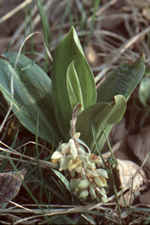 Most
people know orchids from market gardens. The tropical hybrids, which can be
bought there, mostly have great and colourful flowers. In recent times some
growers get specialised in the reproduction of native species like lady slipper
or Dactylorhiza maculata. If such species are reproduced in glasshouses, it
will be all right. But if the plants are taken away from their native places,
it will be really a problem. The customers are controlling strictly. If somebody
wants to import species protected by the convention of Washington like most
of the tropical orchids, without having a CITES permission will get serious
problems. But without doubt the penalty is not high enough to stop the illegal
trade of protected plants and animals. The profits, which can be made, are
too much lucrative.
Most
people know orchids from market gardens. The tropical hybrids, which can be
bought there, mostly have great and colourful flowers. In recent times some
growers get specialised in the reproduction of native species like lady slipper
or Dactylorhiza maculata. If such species are reproduced in glasshouses, it
will be all right. But if the plants are taken away from their native places,
it will be really a problem. The customers are controlling strictly. If somebody
wants to import species protected by the convention of Washington like most
of the tropical orchids, without having a CITES permission will get serious
problems. But without doubt the penalty is not high enough to stop the illegal
trade of protected plants and animals. The profits, which can be made, are
too much lucrative.
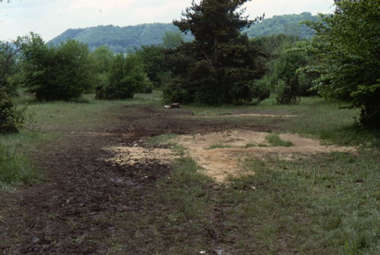 In
Baden-Württemberg such as in all other countries of Germany every native orchid
is protected by law. Most of the prettiest orchid places are protected as
Naturschutzgebiet or Naturdenkmal. And this really is necessary. In Germany
orchids are signalising an extensive use of landscape. So, native orchids
can be found in deciduous woods and especially in wet and dry extensive meadows.
Because of the change in landscape using and urbanisation the native orchids
decreased during the last 30 years. For example: Orchis morio. 30 years ago,
this pretty little orchid was really common in Europe. So they called it "common
orchid". Today, only some few and isolated sites still can be found in south
Germany, with decreasing trend - for all the efforts of the government.
In
Baden-Württemberg such as in all other countries of Germany every native orchid
is protected by law. Most of the prettiest orchid places are protected as
Naturschutzgebiet or Naturdenkmal. And this really is necessary. In Germany
orchids are signalising an extensive use of landscape. So, native orchids
can be found in deciduous woods and especially in wet and dry extensive meadows.
Because of the change in landscape using and urbanisation the native orchids
decreased during the last 30 years. For example: Orchis morio. 30 years ago,
this pretty little orchid was really common in Europe. So they called it "common
orchid". Today, only some few and isolated sites still can be found in south
Germany, with decreasing trend - for all the efforts of the government.
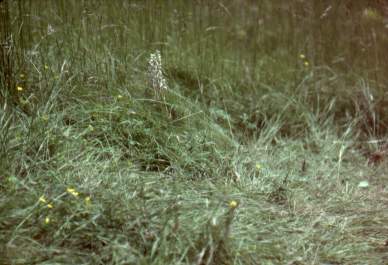 But
orchids not only are threatened by humans. Also some animals "like" orchids
very much. Especially wild pigs can turn over meadows to dig out the orchid
tubers. It seams they taste very good. In some European regions orchids are
eaten by red deer. They like especially the wood-orchids like Cephalanthera.
But also caterpillars and worms are misappropriating orchids, for example
of the genus Ophrys. And last but not least naked snails, the nightmare of
all gardeners, can be a problem for orchids. In some regions, also in the
woods, theses voracious little animals increase while the number of orchids
decrease. Even if these animals locally can damage orchid populations: the
human beings worldwide are destroying orchid sites in a big way.
But
orchids not only are threatened by humans. Also some animals "like" orchids
very much. Especially wild pigs can turn over meadows to dig out the orchid
tubers. It seams they taste very good. In some European regions orchids are
eaten by red deer. They like especially the wood-orchids like Cephalanthera.
But also caterpillars and worms are misappropriating orchids, for example
of the genus Ophrys. And last but not least naked snails, the nightmare of
all gardeners, can be a problem for orchids. In some regions, also in the
woods, theses voracious little animals increase while the number of orchids
decrease. Even if these animals locally can damage orchid populations: the
human beings worldwide are destroying orchid sites in a big way.
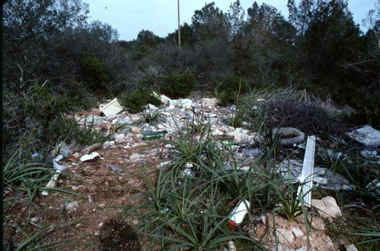 Today,
only few farmers still are interested in work on dry or wet, extensive meadows.
Often it needs special contracts between the farmers and the administration
for protecting nature to keep the orchid places. For this, the government
of Baden-Württemberg every year spends several millions of Marks. Moreover
special programs for different plants and animals helps to save them. So,
most of the important orchid sites in Germany now are safe.
Today,
only few farmers still are interested in work on dry or wet, extensive meadows.
Often it needs special contracts between the farmers and the administration
for protecting nature to keep the orchid places. For this, the government
of Baden-Württemberg every year spends several millions of Marks. Moreover
special programs for different plants and animals helps to save them. So,
most of the important orchid sites in Germany now are safe.
 In
the countries around the Mediterranean Sea the situation looks bad, because
the protection of nature often only exists on the Paper. Too much cattle on
the one side, no more land using and unrestrained urbanisation of coastal
regions on the other side cause a dramatic fall of orchids. Especially in
Turkey the situation is disastrous. There, orchids not only are threatened
by the intensive using of landscape and urbanisation, but also by digging
out the tubers. People there dry, grind and eat them to get more sexual power.
Indeed it's sure: That does not work. In some regions of Turkey, orchids now
are that rare, so we can be happy to find at least a single one. If the situation
will not improve, which can be expected, some of the species soon will be
destroyed. Please look also to our column "Orchid of the month", Ophrys
isaura.
In
the countries around the Mediterranean Sea the situation looks bad, because
the protection of nature often only exists on the Paper. Too much cattle on
the one side, no more land using and unrestrained urbanisation of coastal
regions on the other side cause a dramatic fall of orchids. Especially in
Turkey the situation is disastrous. There, orchids not only are threatened
by the intensive using of landscape and urbanisation, but also by digging
out the tubers. People there dry, grind and eat them to get more sexual power.
Indeed it's sure: That does not work. In some regions of Turkey, orchids now
are that rare, so we can be happy to find at least a single one. If the situation
will not improve, which can be expected, some of the species soon will be
destroyed. Please look also to our column "Orchid of the month", Ophrys
isaura.
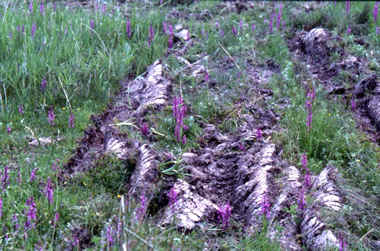
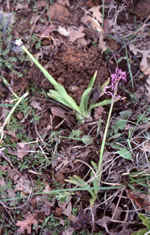 Everybody
is responsible to save wildlife for the following generations. We also speak
to the photographers. In some interesting and famous orchid places it is necessary
to organise guards on Saturdays and Sundays to canalise the flood of nature-lovers,
armed by voluminous photographic equipment. And it's a shame that it is necessary
to say, nobody should dig out orchids. It's sure, this beautiful organisms
cannot live in human gardens, they like their native places.
Everybody
is responsible to save wildlife for the following generations. We also speak
to the photographers. In some interesting and famous orchid places it is necessary
to organise guards on Saturdays and Sundays to canalise the flood of nature-lovers,
armed by voluminous photographic equipment. And it's a shame that it is necessary
to say, nobody should dig out orchids. It's sure, this beautiful organisms
cannot live in human gardens, they like their native places.